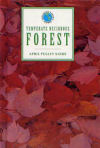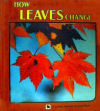A change in leaf color Additional Information
To learn more about why leaves change color, see www.esf.edu/pubprog/brochure/leaves/leaves.htm (SUNY College of Environmental Science and Forestry), harvardforest.fas.harvard.edu/research/leaves/autumn_leaves.html (Harvard University), www.na.fs.fed.us/spfo/pubs/misc/leaves/leaves.htm (USDA Forest Service), and www.sciencemadesimple.com/leaves.html(Science Made Simple).
Information about the effect of global warming on leaf color can be found at earthobservatory.nasa.gov/Laboratory/PlanetEarthScience/GlobalWarming/GW_InfoCenter_Europe.html
(NASA).
For fall foliage alerts, go to www.fs.fed.us/news/fallcolors/ (U.S. Department of griculture
Forest Service).
Milius, Susan. 2002. Why turn red? Science News 162(Oct. 26):264-265. Available at http://www.sciencenews.org/articles/20021026/bob8.asp.
Webb, Sarah. 2005. The color of health. Science News for Kids (March 2). Available at http://www.sciencenewsforkids.org/articles/20050302/Feature1.asp.
Books recommended by SearchIt!Science:
 |
Temperate Deciduous Forest— April Pulley Sayre
Published by Twenty-First Century Books/Millbrook Press, 1994.
Vibrant oranges, brilliant yellows, and deep reds are some of the colors for which the temperate deciduous forest is known. Only deciduous trees put on this colorful show. But even more amazing than the changing colors of the leaves is how they fall. “This sudden movement of vegetation, from branches to the ground, is one of the most remarkable, gigantic energy transfers on the planet,” notes this author. Explore the fascinating biome of the temperate deciduous forest in this book, which discusses temperate deciduous forest weather, climate, and geology, as well as forest plants and animals. Read about deciduous forest communities, and learn about how people have interacted with the forest and the impact of this interaction. |
 |
How Leaves Change— Sylvia A. Johnson
Published by Lerner Publishing, 1986.
In some parts of the world when autumn comes, the green leaves on deciduous trees turn brilliant red, yellow, or orange and then fall to the ground. What causes these changes? This book shows this autumn sequence with color photographs, diagrams, and drawings. Trees work hardest in the spring and summer. They change light from the sun into energy through a process called photosynthesis. As the sunny days grow shorter, trees enter a new stage of life. Their leaves change color and die as the tree prepares for winter. This book not only discusses how leaves change but also considers the life cycle of the tree. |
Power Words
chlorophyll A green pigment that is found in green plants and other living things, such as some bacteria, chlorophyll helps absorb energy from sunlight. The energy absorbed is
then used to make food and produce oxygen during photosynthesis.
photosynthesis The process that allows green plants and some algae and bacteria to make sugars from water, carbon dioxide, and sunlight. The plants and other organisms use the sugars as food and release oxygen into the air as a waste product.
pigment A chemical compound that gives a particular color to part of a plant or animal and this is needed for important life processes. Chlorophyll is a pigment that makes green plants green and is needed for photosynthesis. Hemoglobin is a pigment that makes red blood cells red and carries oxygen to other cells.
Copyright © 2002, 2003 Houghton-Mifflin Company. All rights reserved. Used with permission.
